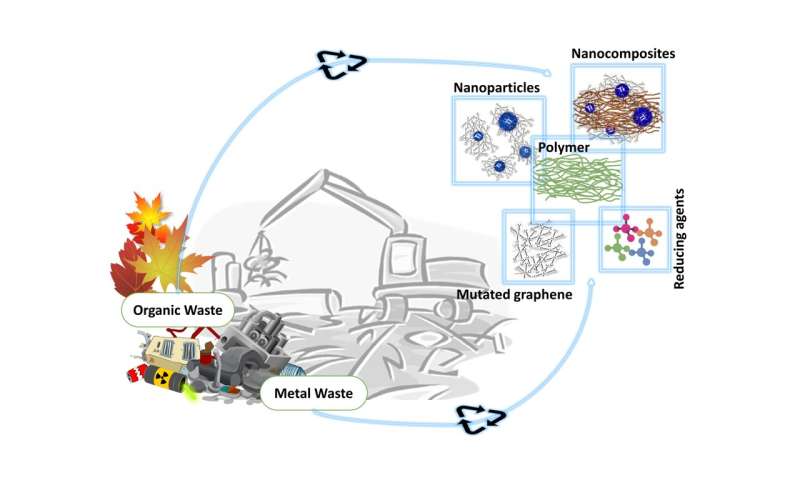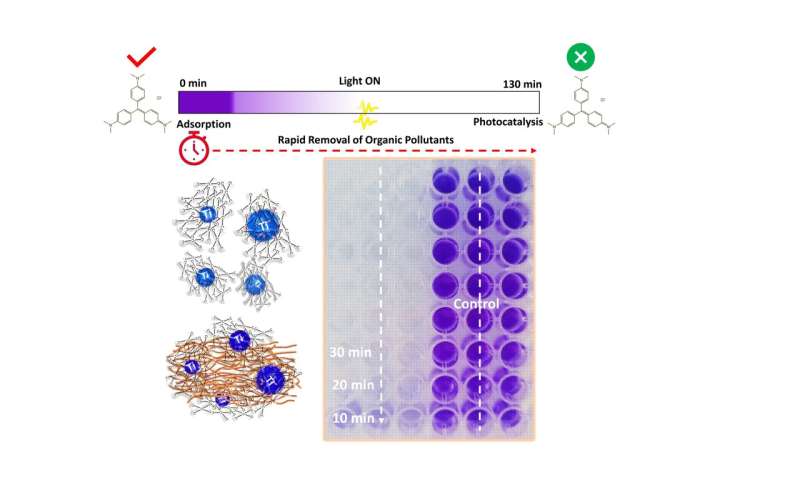Recycled environmental waste into useful nanomaterials: What makes them so important for sustainable development

Nanotechnology deals with the synthesis and modification of physical and chemical properties of the material at an extremely small scale. How small is nano? Nanomaterials should have one of their dimensions between 1-100 nanometers (nm). Think about human hair; it can hold 100,000 of 1 nm nanoparticles. What makes nanomaterial special other than its size is that it can show different properties compared to their bulk material (from where they were synthesized). For example, silicon which is an insulator can become a conductor at the nanoscale, and inert material like platinum can turn into super-catalysts at nano.
Nowadays, those tiny nanomaterials are in high demand due to their exceptional properties. They are used in every field of daily life, such as nano-titania in sunscreen to block harmful UV radiations, self-cleaning windows, and modified paints, nano-silica to prepare waterproof and stainproof fabrics and silicon chips, nano-silver in toothpaste for antibacterial properties, nano-catalysts for removing environmental pollutants and for energy production, nanomaterials for gas, pressure, voltage, and microbial sensing, superconductors in smart electronics, engineering, aerospace technologies, and environmental sciences.
Synthesis of nanomaterials and sustainability issues
Nanomaterials are usually produced by the "top-down method" or "bottom-up method." In the top-down method, bulk materials are converted into nanomaterials, by using ball-milling or electron beam lithography techniques. In the bottom-up approach, atoms are assembled to form nanomaterials of various kinds, for example, nanoclusters, nanoparticles, nanosheets, or nanotubes. Sol-gel synthesis, chemical co-precipitation method, electrodeposition, and green synthesis are examples of the bottom-up approach.
However, apart from the tremendous development in the synthesis methodologies of the nanomaterials, their high production cost and use of natural resources remain unsolved.
Recycling of environmental waste into nanomaterials
Considering the depletion of natural resources, robust population growth, high consumer demands, and escalating environmental pollution (also because of nanomaterials' synthesis procedures), it is worthwhile to adopt a new approach that can create highly efficient products purely from waste.
Concerning this important issue, we designed a new method that can use both inorganic (metals) and organic waste to produce different types of nanomaterials (nanoparticles, carbon nanomaterials, polymers, and nanocomposites). While demonstrating the importance of this new approach, we used titanium scrap and dead plant leaves as an example to produce mutated graphene with TiO2 nanomaterials, nanocellulose (polymer), and TiO2-nanocellulose nanocomposite [Figure 1].
Achieving sustainability in nanotechnology
Like any production method, nanomaterials production also requires precursors (reagents) as starting materials. For example, if we would like to make bread, flour and water will be the precursors. Similarly, to produce metal/metal oxide, carbon, or polymer nanomaterials, we need metal-salt, carbon source, polymer, and metal ions chelating (reducing) agents that can help in synthesis. However, consuming natural resources as precursors to produce nanomaterials results in the depletion of natural resources and environmental pollution. That is why achieving sustainability in nanomaterials synthesis is challenging. Interestingly, our designed method collects all precursors from waste. Metal comes from industrial metal waste, carbon, polymers, and reducing agents come from the dead plant. So, in this way, both inorganic and organic waste materials were used to their full potential and subsequently transformed (recycled) into highly efficient nanomaterials of different types.
How efficient are the nanomaterials produced from waste?
Production of the nanomaterials from waste is the first success. However, it is equally important to demonstrate the efficiency of those nanomaterials produced from waste. Our prepared nanomaterials were successfully tested to treat wastewater by removing organic pollutants in quick time [Figure 2]. We observed that the prepared nanomaterials were very effective, even when used in very small concentrations. This aspect is essential when we talk about eco-friendly products. The goal was to obtain products that can have high efficiency at minimum price-value.

Future perspective
The sustainable approach in the synthesis and application of nanomaterials is gaining importance day by day. Our current findings will provide new opportunities to the scientist as well as the industry in the field of nanotechnology to recycle waste materials into cost-efficient nanomaterials. Different metal wastes such as Al, Cu, Zn, Ti, Fe, etc. and organic wastes (e.g. decaying plant matter) can be processed through this approach and converted into nanomaterials for various applications. This will not only lower the production cost but also preserve the natural resources and will surely reduce environmental pollution.
We are trying to further enhance the efficiency of nanomaterials produced from waste, such as modification into 2D nanomaterials, scale-up production in collaboration with industrial partners, and targeted applications in environmental sciences. Near future, we hope to see more development in sustainable nanotechnology.
This story is part of Science X Dialog, where researchers can report findings from their published research articles. Visit this page for information about ScienceX Dialog and how to participate.
More information:
Qaisar Maqbool et al, Transformation of industrial and organic waste into titanium doped activated carbon – cellulose nanocomposite for rapid removal of organic pollutants, Journal of Hazardous Materials (2021). DOI: 10.1016/J.JHAZMAT.2021.126958
Qaisar Maqbool is a Ph.D student in the Department of Industrial Engineering and Mathematical Sciences (DIISM) of the Polytechnic University of Marche, Italy. He is currently working on "High-performance next-generation nanomaterials synthesis via novel green chemistry methods." Email (q.maqbool@pm.univpm.it)